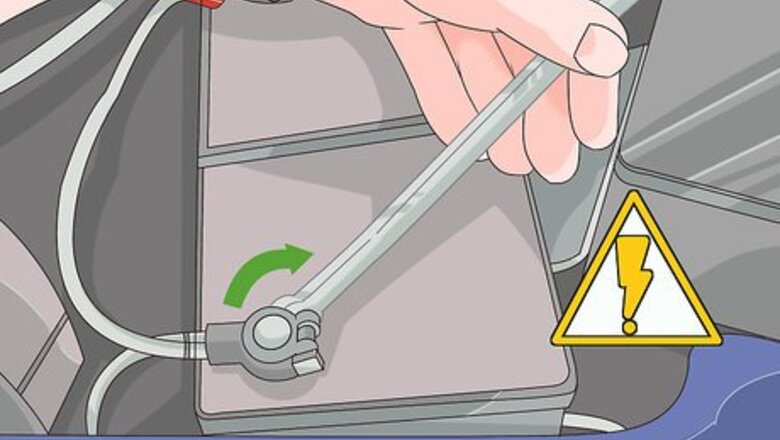
views
Checking the Brake Light Switch for Damage
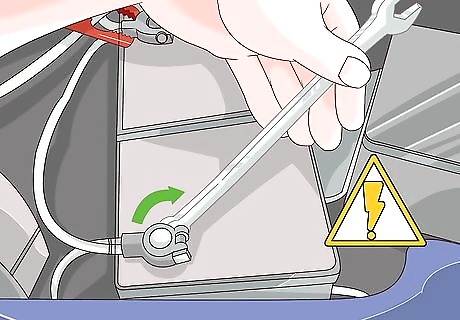
Disconnect the battery. Before doing any work on the electrical system in your vehicle, you should always disconnect the battery. This will ensure you don’t shock yourself or damage anything as you work. Use a hand or socket wrench to loosen the nut securing the ground cable to the negative terminal of the battery. Slip the cable off and tuck it to the side of the battery. You can locate the negative terminal by finding the letters “NEG” on the battery or looking for the negative (-) symbol. You will not need to disconnect the positive terminal.

Put on eye protection. You will need to look around on the underside of your dashboard for this project, so it’s important that you put on eye protection to ensure no debris falls into your eyes. You will not need gloves for this project, but may choose to wear them to avoid poking yourself with wires. Goggle style eye protection offers the highest level of protection. Glasses style eye protection will suffice for this task.

Locate your brake pedal switch. The brake pedal switch is a button located along the shaft of the brake pedal, above the foot pad. As you press the pedal, the shaft presses the button, which turns on the brake lights. If you are unsure where to locate your brake pedal switch, refer to the service manual for your specific vehicle. The switch will have a wired pigtail coming off of it and will be mounted directly behind the brake pedal.

Disconnect the wiring pigtail from the switch. The wiring pigtail for the switch will be held in place with a plastic housing. Press on the clip release on the plastic housing to allow the pigtail to disconnect from the switch, then pull on the plastic portion of the pigtail to disconnect it. Do not pull on the wires themselves as it may disconnect or tear them away from the pigtail harness. Be very careful not to break the plastic clip.
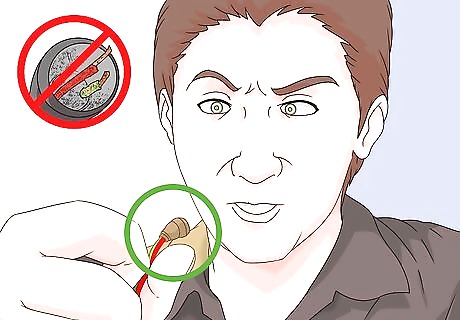
Visually inspect the wiring. Look inside the pigtail harness for signs of burning or melting. If the wiring has overheated, the pigtail may have been damaged, resulting in the brake light staying on permanently. Any signs of damage inside the wiring pigtail could cause issues with your brake lights. A damaged pigtail will have to be replaced in order to make your brake lights function properly. You may need to order the brake light switch pigtail from a dealership for some vehicles if they are not carried at your local auto parts store.
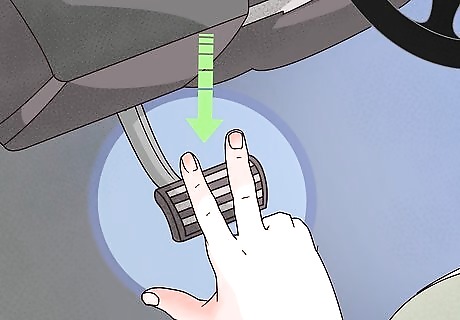
Test the return of the switch. The switch itself is a long button that is pressed when you press the brake pedal down with your foot. While under the dashboard, press in on the pedal or on the button itself and see if the button pops back out when you release it. If it doesn’t, it likely means that the button is sticking in the “on” position. If the button is sticking in the “on” position, it will leave the brake light on all the time. Have a friend stand behind the car to see if pressing and depressing the switch has any effect on the brake lights. If the button doesn’t affect the lights, there may be a blown fuse or the switch itself may have gone bad.
Installing a New Brake Light Switch
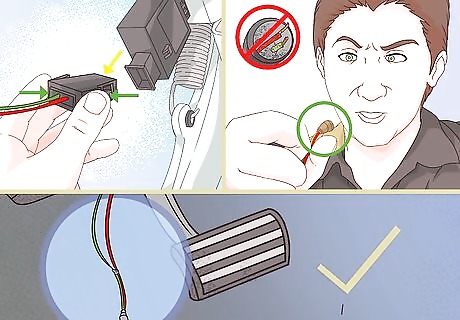
Ensure the wiring harness is disconnected. Before removing the brake light switch, you need to be sure the pigtail is disconnected. If you already disconnected it to inspect it for damage, leave it hanging as you remove the switch. If not, disconnect it now by pressing on the plastic release and pulling back on the plastic housing. Unless the pigtail harness needs to be replaced, you will reuse it with the new brake light switch. If you break the release, you may be able to use electric tape to hold the pigtail in place upon reassembly to avoid purchasing a new one.
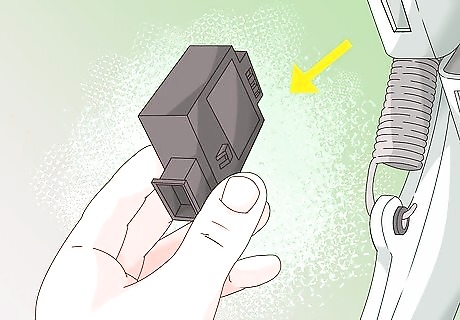
Remove the switch from the brake pedal linkage. Different vehicles mount the brake light switch to the pedal linkage in different ways. If it is not readily apparent how to remove the switch from the pedal, refer to the service manual for your specific year, make and model vehicle. The switch is usually held in place with one or two small bolts. Be careful not to lose the mounting hardware. You will need to reuse them when installing the new switch.
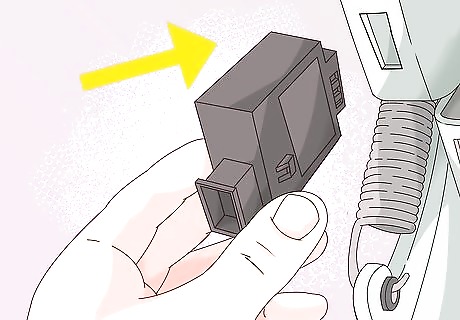
Slide the new switch into place. With the old switch removed, slide the new switch into place exactly where the old one was. Use the mounting hardware that held the previous switch in place to secure the new one in the same manner. Replace the bolts that secure the switch if they were damaged in the process of removing them.

Reconnect the switch to the linkage and the harness. Plug the brake light switch pigtail into the new switch and reattach any other connections you may have needed to disconnect in your specific vehicle. The switch should now be in place behind the shaft of the brake pedal and connected to the vehicle. Reconnect the battery and start the vehicle. Have a friend stand behind the vehicle while you test the new brake light switch to confirm it’s working.
Replacing Blown Fuses

Locate the appropriate fuse box. Most vehicles have at least two fuse boxes located throughout the body. One is often under the hood with a second fuse box on the driver’s side of the cabin. Refer to your vehicle’s owner’s manual to determine which fuse box houses the fuse for your brake lights. You may need to remove a fuse box cover or pieces of the interior trim to access the fuse box. If you do not have an owner’s manual for your vehicle, try referring to the automaker’s website.

Identify the fuse for the brake lights. Use the diagram in your owner’s manual or on the inside of the fuse box cover to determine which fuse powers the brake lights. A bad brake light fuse may have resulted in the lights being stuck on or off. There may be more than one fuse for your brake lights. If that is the case, you will need to check each of them.
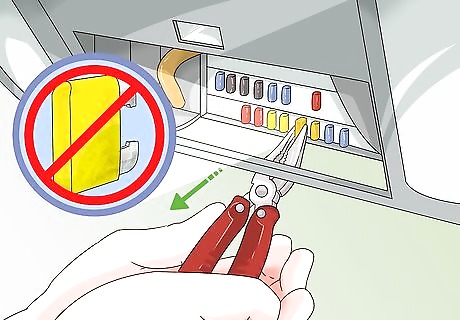
Remove the fuse and inspect it for damage. Use a pair of needle nose pliers or plastic tongs to remove the fuse from its spot in the fuse box. Look into the fuse if it has a clear housing. If the metal is broken or burned inside the fuse, it will need to be replaced. If you can’t look inside the fuse, inspect the ends for damage or signs of burning. Most automotive fuses have translucent covers to allow you to inspect them. If the cover itself is damaged so you can’t see through it, the fuse is likely bad.
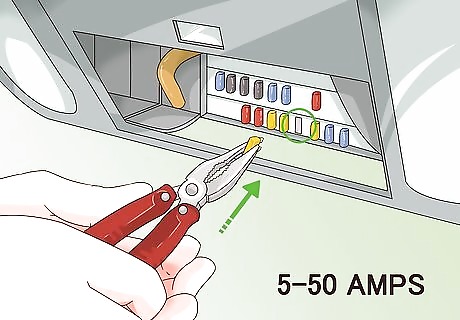
Replace a damaged fuse with one rated for the same amperage. Identify the amperage required for your brake light fuse by looking at the chart. Most automotive fuses are between 5 and 50 amps, with a number listed along the top of the fuse. Insert a new fuse in the spot you removed the faulty brake light fuse from. Once done, replace the lid to the fuse box and any interior pieces you may have needed to move to get to it. Reconnect the battery and start the vehicle. Have a friend stand behind it to check to see if the brake lights function properly.




















Comments
0 comment